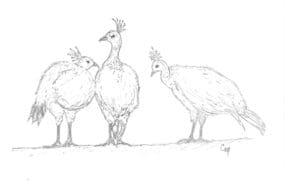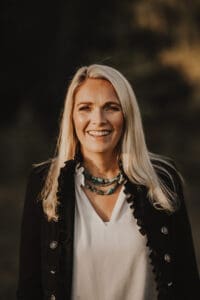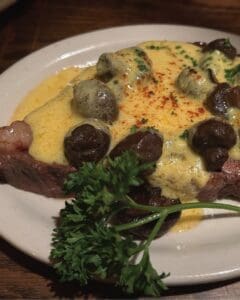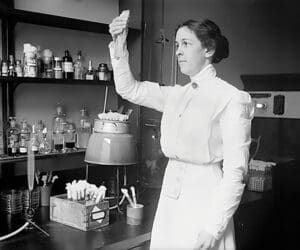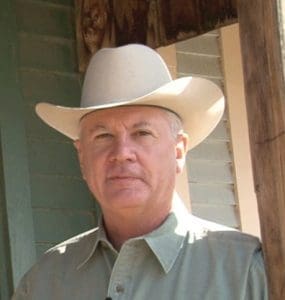Artificial Intelligence, Virtual Fences Among New Beef Industry Hi-Tech Services
By Larry Stalcup Contributing Editor

Animal Health Intelligence
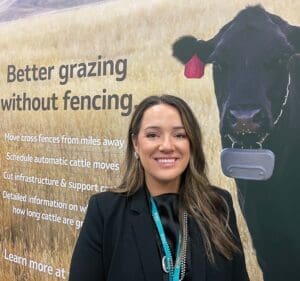
Artificial intelligence (AI) is becoming nearly as important to the cattle business as the more traditional AI that has helped ranches improve herd genetics and produce the high-quality beef consumers crave. Many new-age AI products and services were demonstrated at the recent Cattle Industry Convention & NCBA Trade Show in San Antonio.
SenseHub Cow Calf from Merck Animal Health was among products presented. The system uses ear-tag monitors to collect data on the female’s temperature and other vital animal health information. Jason Nickell, DVM and the company’s director of insights and outcomes, said the data can help producers identify an optimal breeding window or spot health issues earlier.
“SenseHub Cow Calf captures multiple forms of animal data to identify heat or estrus activity in females,” he said. “It focuses on producers using artificial insemination or embryo transfer. It monitors the female in a 24-7 fashion. It can also assist individuals that want to breed based on visual estrus outcomes in a more effective and labor-optimized outcome.”
With the system, an antenna captures data from the SenseHub Cow Calf ear tags. A receiver base station sends data through the cloud. The user can securely go online and monitor which cows are in heat and make breeding plans based on that information.
Nickell further described these advantages of using the SenseHub Cow Calf system:
- Reproduction monitoring identifies the reproductive status of cows and reduces the uncertainty and inconsistency of monitoring heat.
- Health monitoring provides earlier alerts of potential health issues, often before clinical signs become visible.
- Group monitoring provides a better understanding of key herd behaviors, including rumination activity, herd movement and other comfort, nutrition and health information.
“SenseHub Cow Calf may be used to tighten calving intervals to thereby drive economic improvement,” Nickell said. “It may provide vital insights into cow behavior post-calving to protect the female’s physical wellbeing.”
Like with Merck Animal Health’s SenseHub Feedlot, the ear tags can be used several times on different animals. “The tag is applied with a general Allflex-type tagger and has a battery life of about five years,” Nickell said. “They can be used on multiple heifers and cows.
“We’re seeing positive things in first-calf heifers and older cows. Regarding an artificial insemination program, testimonial feedback indicates users are no longer heat-checking cows multiple times daily. Cows found to be in heat at night can be more easily identified, potentially contributing to an overall improvement in conception.”
In embryo transfer operations it can be more difficult to get females bred when they don’t conceive the first time. “With this technology, we can see the subsequent heat cycles, then turn around and rebreed faster,” Nickell said.
He added that some veterinarians are using the system on their cows and seeing good results. “They are beginning to recommend it to their customers,” he said. “The technology is not designed as a calving-alert system,” but may provide help in calving ease.
Virtual Fencing
Virtual fencing is seeing more usage in cattle operations. Producers are trying to reduce much of the labor-intensive efforts needed in traditional fencing.
Allison Burenheide, associate director of strategic marketing and operations for Vence, a subsidiary of Merck Animal Health, said virtual fence usage has increased substantially in the past two years. “Virtual fencing is a solution to a lot of problems producers face with grazing restrictions,” she said.
The Vence system involves two components. Solar base stations are strategically placed on pastures to communicate with the company’s electronic CattleRider collar worn by cattle. A single base station can cover 5,000 to 10,000 acres, depending on topography. Using the Vence Herd Manager software system, operators can use a tablet or laptop to define boundaries of the virtual fence line served by one or more base stations.
“Lines can be redrawn to include specific areas, accommodate rotational grazing and protect environmentally sensitive land,” Burenheide said, noting the technology “trades the limitations of physical fencing for the agility of a virtual fence.”
When an animal approaches the virtual fence boundary, the collar emits sound signals. Animals quickly adapt to the signal and learn to avoid it by moving away from the boundary. “If the sound cues aren’t effective, the collar activates an electric pulse as an added stimulus to push the animal from the virtual fence boundary,” Burenheide said. “The pulse is humane and safe for animals.”
A majority of the herd will adapt to the system in a few days. “Our Rancher Success Team provides education for product usage and other services to ensure success,” Burenheide said.
She added that about 60,000 Vence collars are in use, with many on herds grazing on BLM and U.S. Forest Service land. “Producers can graze in areas that are harder to reach,” she said. “They can become better stewards and identify gaps in an operation.”
Initial cost can involve about $10,000 per base station, with an annual subscription of $40 per battery-powered collar, plus an additional $10 for the battery. The collar subscription covers the collar itself, software and technical support, allowing users to replace or update their collars at no extra cost.
But with the cost of fencing easily approaching $15,000 per mile, and much higher in more remote land, virtual fencing could easily be cost effective.
For more on Vence and virtual fencing visit, VenceFence.com. For more on SenseHub Cow Calf, go to SenseHub-CowCalf.com.

